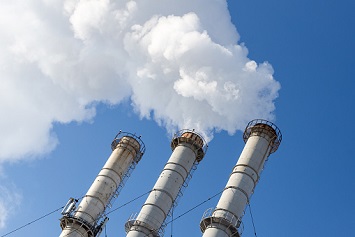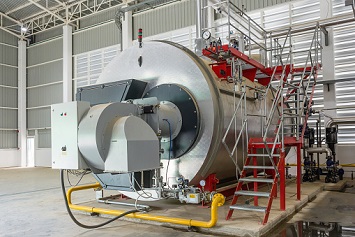A panel of the U.S. Court of Appeals for the D.C. Circuit ordered the EPA to review a surrogate emissions limit in the Agency’s 2015 revisions to its 2013 National Emissions Standards for Hazardous Air Pollutants for Major Sources: Industrial, Commercial, and Institutional Boilers and Process Heaters (Boiler MACT [maximum achievable control technology]).
Responding to a petition from environmental groups (collectively, the Sierra Club), the panel agreed that the EPA did not sufficiently substantiate the 130 parts per million (ppm) emissions limit for carbon monoxide (CO) that the EPA set in the 2015 rule. The panel agreed with the Sierra Club’s recommendation that the court refrain from vacating the limit, which would result in no emissions limit. The limit, therefore, remains in effect while the Agency conducts “further proceedings” consistent with the panel’s opinion.
The Boiler MACT is one of the most consequential air rules the EPA promulgated during the Obama administration; the Agency estimated that approximately 14,000 major source boilers are subject to the rule. Boilers burn fuels, including natural gas, fuel oil, coal, biomass (e.g., wood), refinery gas, or other gas to produce steam. The steam is used to produce electricity or provide heat. The EPA promulgated the Boiler MACT in 2011. After stakeholders asked the Agency to reconsider the rule’s provisions, the Agency issued amendments in 2013 and followed that with the 2015 revisions. Many of the 2013 amendments were challenged in the D.C. Circuit in United States Sugar Corp. v. EPA (U.S. Sugar,2016); that ruling is an important precursor to the current opinion, Sierra Club et al. v. EPA (Sierra Club), which, says the panel, addresses issues that were not covered in its 2016 opinion.
Overall, the panel ruled on Sierra Club petitions related to four aspects of the 2015 revisions. The panel agreed to act on only the 130 ppm CO limit and denied the three other petitions. Key points made in the opinion are summarized below.
CO Emissions Limit
In the 2015 revisions, CO serves as a surrogate for organic hazardous air pollutant (HAP) emissions. The Agency argued that it was necessary to use a surrogate because CO emissions are easily measured while reductions in organic HAP are not. In U.S. Sugar, the D.C. Circuit panel reaffirmed the legality of surrogates provided the Agency “establishes that controlling emissions of the surrogate is a ‘reasonable’ way to achieve the [Clean Air Act’s (CAA)] objective of limiting emissions of corresponding HAPs.”
In both the 2013 and 2015 actions, the EPA decided to reject requests from environmental groups to set a CO emissions limit more stringent that 130 ppm. The D.C. Circuit panel summarized EPA’s thinking. “While EPA’s data confirmed a close correlation between reduced CO emissions and reduced emissions of formaldehyde (a prevalent organic HAP) down to roughly that [130 ppm CO] level, the same data puzzlingly appeared to show, not further reduction, but a spike in formaldehyde emissions at even lower CO levels,” said the panel. “In EPA’s view, the data were therefore ‘not … sufficiently reliable to use as a basis for establishing an emissions limit’ lower than 130 ppm.”
The panel presented a technical assessment of the flaws in EPA’s rationale for sticking to the 130-ppm limit. While acknowledging the increase in formaldehyde emissions below the 130 ppm CO limit, the panel was troubled that the Agency presented no data that the same nonreduction would be true for other organic HAP emissions. In fact, the Agency conceded that the formaldehyde data were not a reliable indicator of what happens to other HAPs when CO emissions fall below 130 ppm.
“EPA may have a hunch that setting CO limits below a certain level would be ineffectual to control HAP emissions,” stated the panel. “But the record we have before us does not substantiate any such conclusion, much less provide a basis for pinpointing that level at 130 ppm.”
Work Practice Standard
The 2015 rule contains a work practice standard instead of emissions limits for major source boilers during the period of start-up and shutdown. The EPA had determined that numeric standards were infeasible because boiler conditions were too variable while heating up and cooling down, and the Agency had scant data about those volatile periods. Hence, the revisions required that work practice standards be applied during these periods. The CAA permits work practice standards when establishment of numeric limits is infeasible. The primary concern cited by the Agency is that during periods of start-up and shutdown, boilers are in flux and can overheat, and there are risks of explosions and equipment damage if operators engage pollution controls too early.
Start-Up
Accordingly, the Agency addressed part of the issue by defining the start-up period—that is, when compliance can be achieved with work practices—as 4 hours after a boiler first supplies useful steam or heat. The required work practices consist of using clean fuel during start-up (in contrast to the boiler’s primary fuel); activating pollution controls as soon as it is safe to do so; developing and implementing a written start-up and shutdown plan; andmonitoring, recording, and reporting data concerning fuel usage, boiler conditions, and control device operations. The numeric standards must be met as soon as practicable.
Sierra Club contended that the EPA should not allow compliance through a work practice standard during that 4-hour window without first making a finding that it is “not practicable” to impose numeric limits during that 4-hour window. The plaintiffs also contended that the work practice standard gave operators too much leeway about what can be achieved with pollution control devices.
The court disagreed.
“Boiler operators must at all times be able to explain why they cannot engage controls sooner than they do, and EPA’s work practices specifically require sources to monitor and record data about conditions that guide their determinations, such as temperature and pressure inside the boiler,” the panel stated. “Those obligations put in place meaningful avenues to double check boiler operators’ assertions about what is possible.”
Shutdown
Under the 2015 rule, the EPA defined “shutdown” to begin when the boiler stopped generating useful steam or heat, or at the point of no fuel being fired, whichever is earlier. As long as primary fuel kept firing during shutdown, boiler operators must operate all applicable control devices, except for four specified controls—dry scrubbers, fabric filters, selective catalytic reduction, and (for fluidized bed boilers) limestone injection—which, the Agency contended, could not be operated safely during shutdown.
Sierra Club argued that the EPA did not present evidence that use of the four control devices during shutdown presented an unacceptable risk. The panel responded that other devices to control emissions were not exempted. The Agency also “reasonably concluded” that the exempted control devices could not safely be operated under conditions encountered during shutdown, said the panel.


